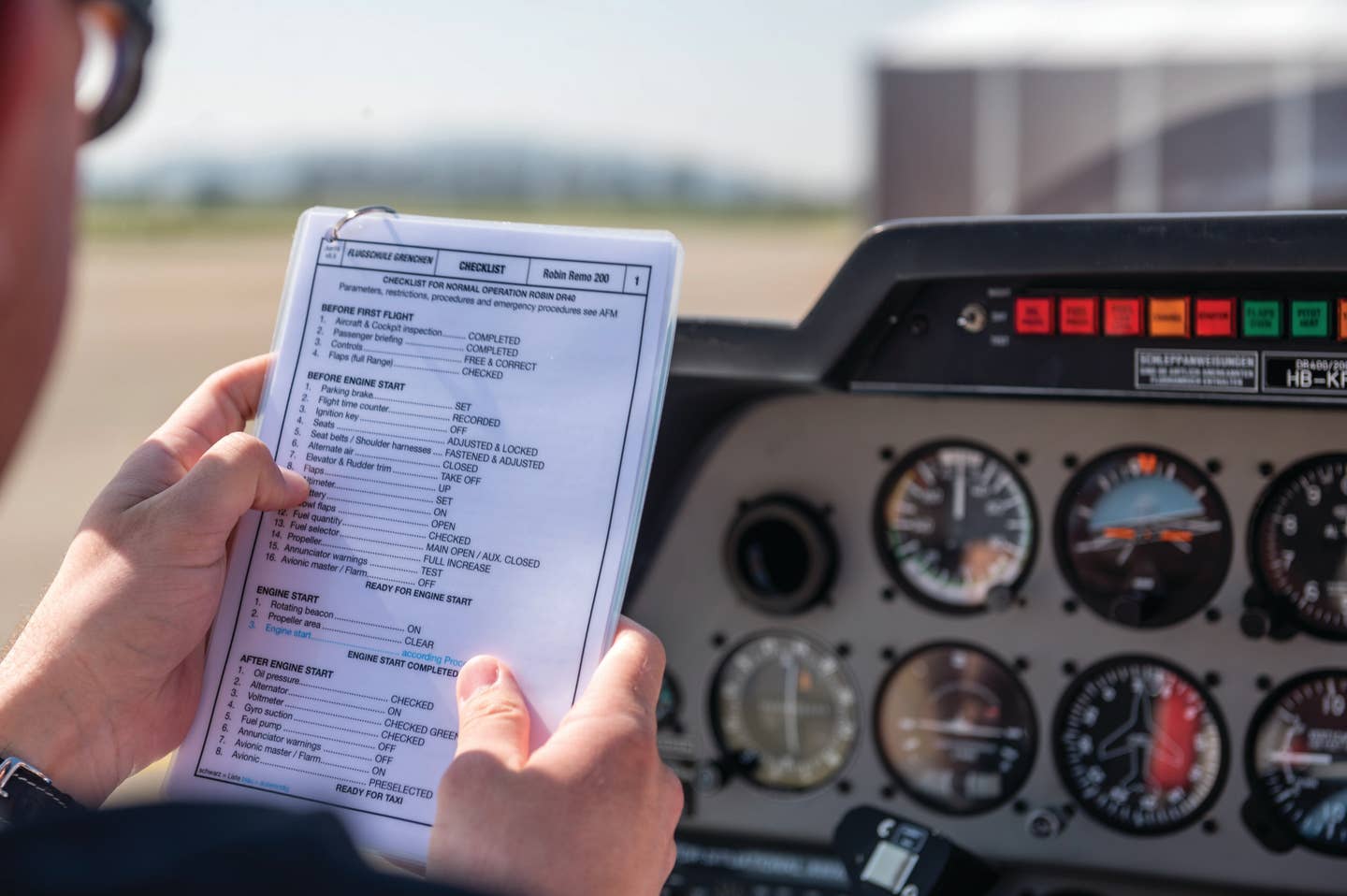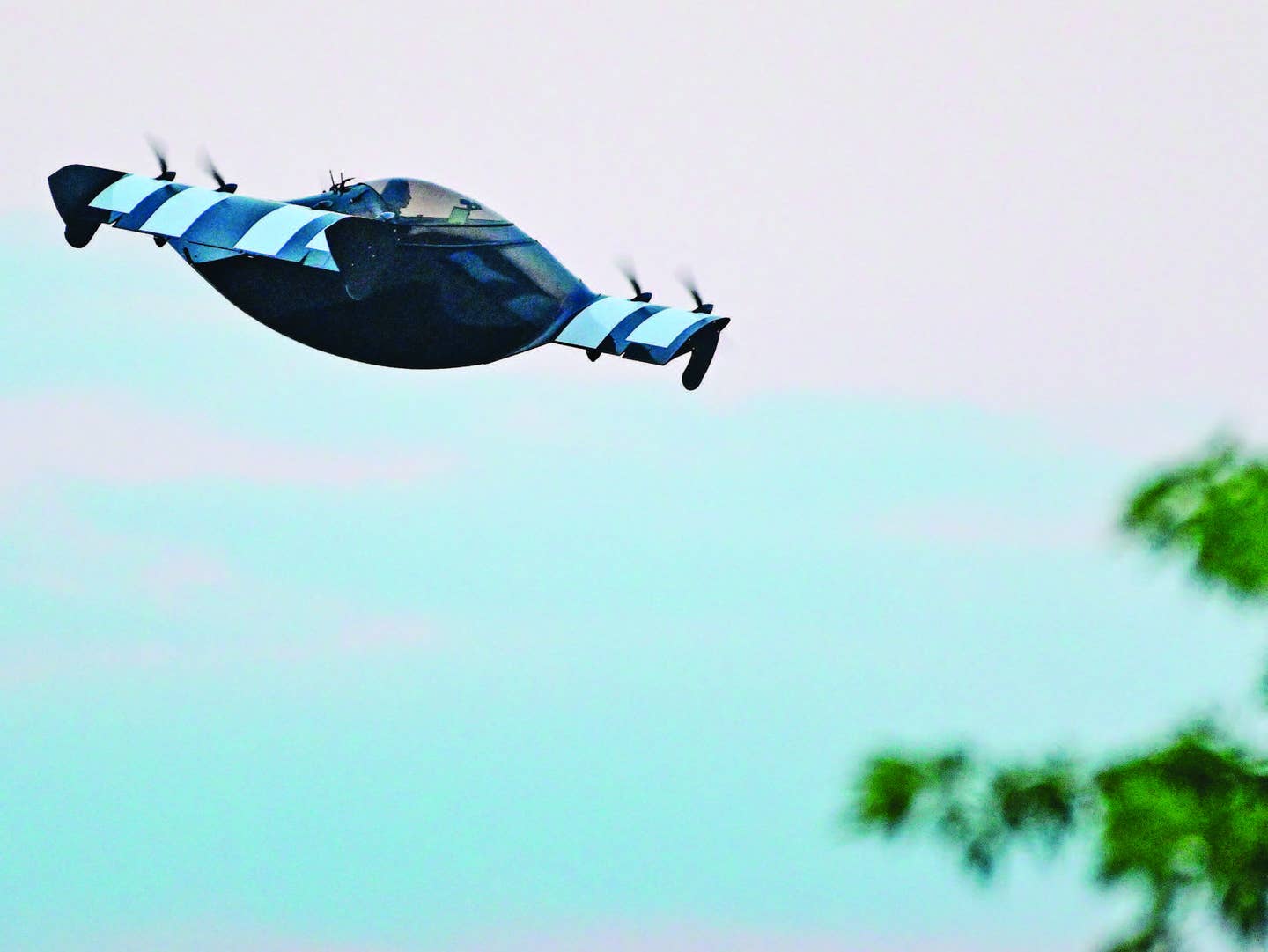Normalization of Deviance Can Cause Problems for Pilots
Breaking the chain of accepting the unacceptable is imperative in flying.

The normalization of deviance was discussed often at the Spring to Proficiency 2024 IFR Clinic put on by Community Aviation at the EAA Pilot Proficiency Center in Oshkosh, Wisconsin. [Shutterstock]
Have you ever cut a corner, perhaps not using a checklist, or skipping a preflight, and then caught yourself doing it again? Nothing bad happened the first time, but that was the beginning of the normalization of deviance.
The normalization of deviance is a phenomenon in which individuals deviate from what is known to be an acceptable performance standard—basically, accepting less than the acceptable in terms of performance or cutting corners—until the deviant behavior becomes the adopted practice. It’s often defended with phrases like “it wasn’t too bad” or “almost” or “close enough” or “we’ve never had a problem before,” and at the flight school level, “my CFI said I didn’t need to know that.”
If you're not already a subscriber, what are you waiting for? Subscribe today to get the issue as soon as it is released in either Print or Digital formats.
Subscribe NowThe normalization of deviance was discussed often at the Spring to Proficiency 2024 IFR Clinic put on by Community Aviation at the EAA Pilot Proficiency Center in Oshkosh, Wisconsin. The clinic involved pilots testing and enhancing their skills using scripted scenarios and custom lessons applied in a fleet of Redbird AATDs. The objective was to help pilots identify skills and soft spots and then develop a plan to maintain proficiency all year.
When bad practices are allowed to go unchecked and unchallenged, they could lead to bad outcomes as the deviance becomes the norm, causing a downward spiral of deviations and an increased acceptance of poor performance until there is an accident.
The Chain of Deviance
Just as accidents are typically caused by a chain of events, normalization of deviance is also caused by it.
Scenarios like the pilot who doesn’t use the checklist, or is in a hurry and doesn’t get a weather briefing, or doesn’t determine aircraft performance, were topics talked about frequently. Some pilots can become lazy and then start rationalizing behavior, telling themselves it’s a short flight, just us in the airplane, we’ve made the flight before, and others—you’ve heard them all, I’m sure.
- READ MORE: How to Beat the Summer Heat When
CFIs can fall prey to this too when they are in a hurry or feel pressured by flight school owners. The rolling Hobbs meter is what matters to the business owners. If the CFI consistently flies an aircraft with deferred maintenance, or rushes from one lesson to another, putting in minimal effort to determine aircraft performance, or doesn’t check the weather, or permits check-the-box instruction, that’s what the learners will accept as normal.
When the learner becomes a CFI, the cycle repeats.
When the Pilot Isn’t Prepared
There are no participation trophies in aviation. You either fly to the certification standards, or you don’t. The CFI needs to hold the learner accountable for these standards. The instructor isn’t helping the learner by just showing up and sitting in the airplane, especially on cross-country flights that require a flight plan.
One of the hardest things to do is cancel a flight when the learner isn’t prepared. Teaching someone how to fill one out can take an hour or more, so some CFIs are inclined to jump in the airplane and go anyway, relying on an app like SkyVector, or worse yet, Direct To on the GPS.
This is particularly poor practice if the learner has no idea about how long the runways are at the destination airport, if it’s towered or nontowered, predicted aircraft performance, weight and balance, etc. By allowing the learner to make the flight without thorough planning, the CFI has taught them it is OK to cut corners and skip preparation. At that point, the learner—who is ostensibly paying to become a pilot—is little more than a passenger. At the end of the 2.1-hour flight the learner still may not know how to use a sectional, plotter, and E6-B to create a flight plan, determine aircraft performance, check ground speed, fill out a navlog, etc.
It can lead to their future cross-country flights being done the same way. They push a few buttons on the tablet or GPS and activate the autopilot if so installed. This may come back to bite them during their check ride, because although they have logged the time as cross-country, they don’t have the required skills. This can make the DPE wonder if the CFI didn’t teach them these skills because the CFI never learned them.
The accelerated nature of flight training now has pilot candidates going from certificate to certificate or rating to rating—read that check ride to check ride—in minimal time and minimal hours. They learn the check rides, and many have very little solo flight experience—perhaps not more than 10 hours, because there is a new shortcut that allows the post-private pilot to fly with a CFI on board and log what used to be required solo time as Pilot Performing Duties of Pilot in Command (PDPIC).
While this builds the hours of the CFI it also robs the learner of the opportunity to gain valuable experience flying solo as in truly solo, in the airplane. The particularly distressing part of this is that a great many of these learners go on to be CFIs that want to be good teachers and experience builders rather than time builders—but they aren’t aware of the deficit they are operating under.
A friend who is a DPE sees this, as he has been tasked with flying with these underprepared pilot applicants who have the minimum required hours of solo flight time who were trained by a CFI with minimal hours “who is greener than Gumby” and doesn’t know how to teach beyond parroting what was taught to them by a (most likely) equally green CFI. Instead of trying to be better teachers, some of these inexperienced CFIs who are time builders focus on “workarounds,” like memorizing the knowledge tests or shopping for a Santa Claus DPE.
CFI Sets the Example
We learn that accidents are usually caused by a chain of events. I submit that a chain of events is also responsible for the normalization of deviance. When we accept the behavior of Hand-It-to-Me Henry, who wants the answers but won’t look things up for himself, or Pencil-Whip Penny, who expects to be signed off with minimal effort, we are enabling the poor behavior.
Flight instructing will make you a better pilot, and you may be surprised at how fulfilling it can be. That being said, it most definitely isn’t for everyone. If you don’t want to be an instructor—especially if you feel it is beneath you—go tow banners, fly as someone’s safety pilot, do pipeline patrol, talk your way into the right seat of a charter operation, or build hours any way besides teaching.
If you are going to teach, expect there will be a learning curve. Ask an experienced CFI you trust and respect to allow you to sit in on a ground lesson, or ride in the back during a flight lesson—always ask the learner if you can do this because you are riding on their dime. The learner is doing you a solid, so perhaps you could offer to help pay for their airplane or thank them by buying lunch.
It’s more than teaching someone to fly. The flight instructor is the first point of contact most pilots have in the aviation industry. Do your best to be a positive role model from day one. If you make a mistake, learn from it, and don’t repeat it or allow it to become the first link in a chain of normalization of deviance.
Draw upon your experience with both the good CFIs you had and the poor ones—the latter may teach you what not to do. Strive to be the instructor the learners remember favorably because you helped them build a solid foundation of skills and set the example you hope they follow in their piloting career by not taking shortcuts.
This column first appeared in the September Issue 950 of the FLYING print edition.

Sign-up for newsletters & special offers!
Get the latest FLYING stories & special offers delivered directly to your inbox







